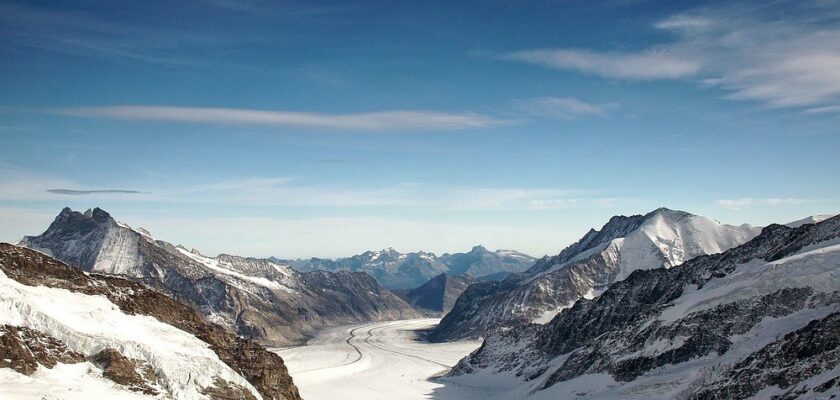Aletsch glacier
Aletsch is the largest and longest glacier in the Alps, covering the southern slope of the Bernese Alps in Canton Wallis for more than 10,000 years. The maximum length of the glacier is 25 kilometers.
.Since 2005, the Aletsch Glacier has been officially recognized as a nature reserve, where an almost relict wild forest grows. Despite its outward impregnability, the glacier is one of the most attractive, visited and popular places in the Alps. Hundreds of tourists come to the glacier every day to admire the dazzling white mountain slopes, the extraordinary purity of the ice cover, the delightful picturesque canyon formed by thousands of tons of ice. One of the branches of the glacier – the Big Alech Glacier – is of special interest to visitors. It resembles a giant bed of an ancient river or an unusually beautiful and mysterious man-made road. The Aletsch Glacier, part of the Jungfrau-Aletsch-Beachhorn region, is listed as one of the Seven Wonders of Nature.
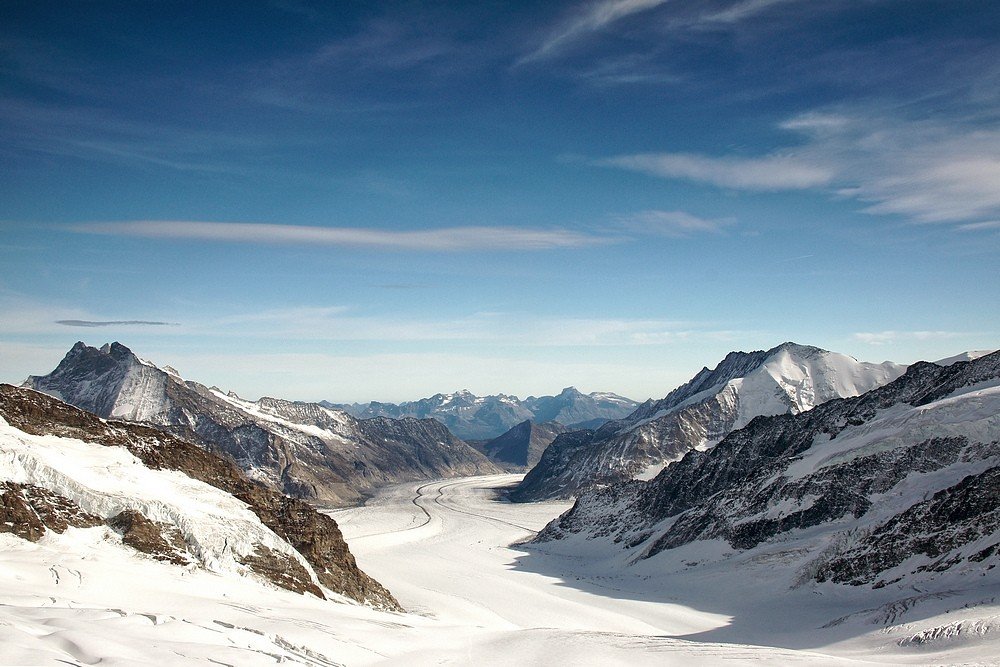
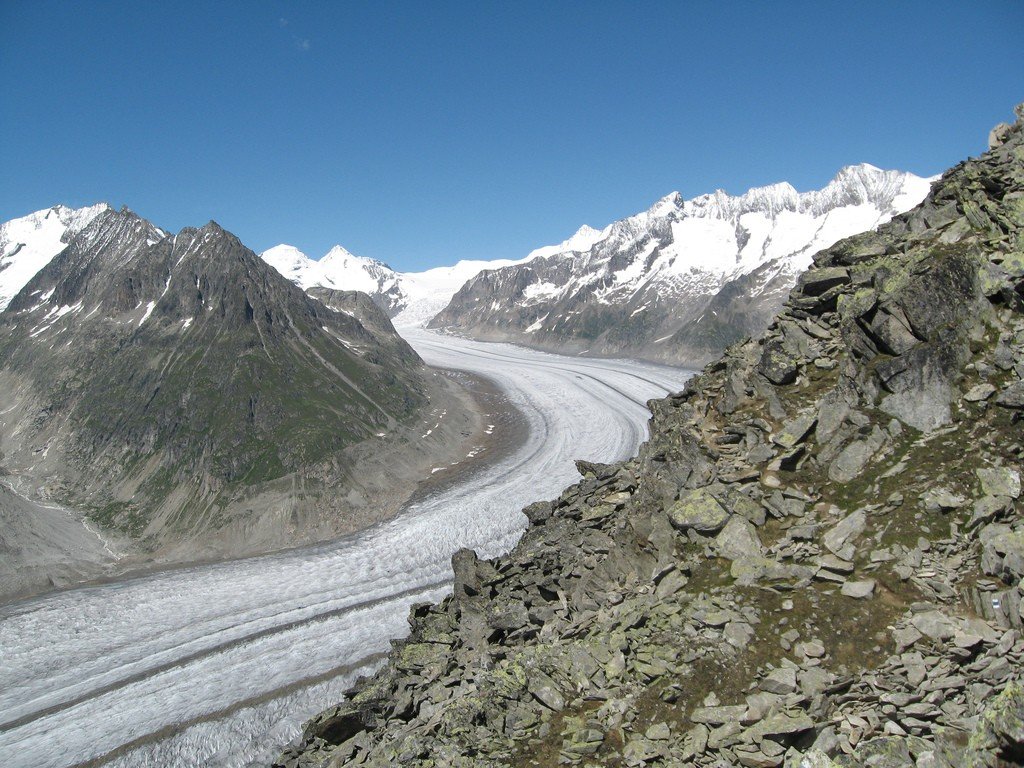
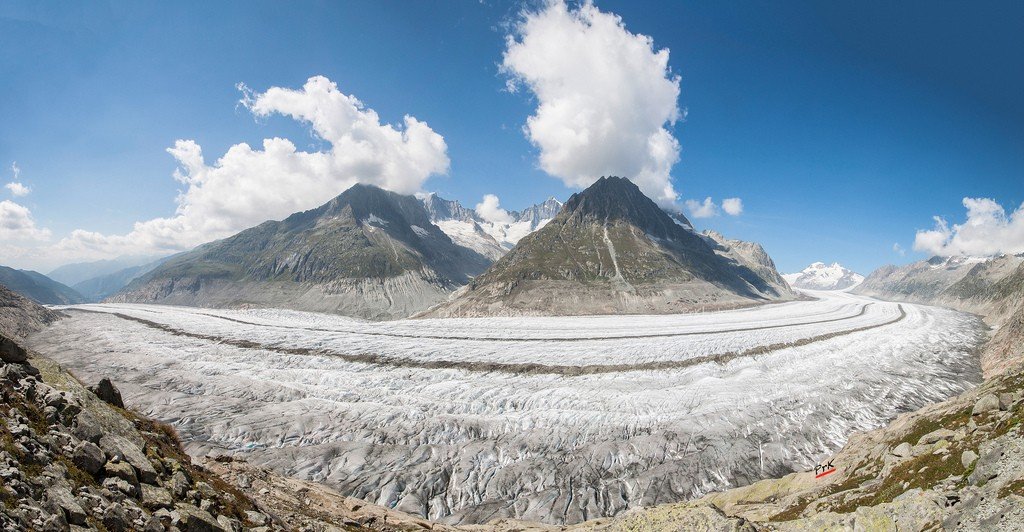
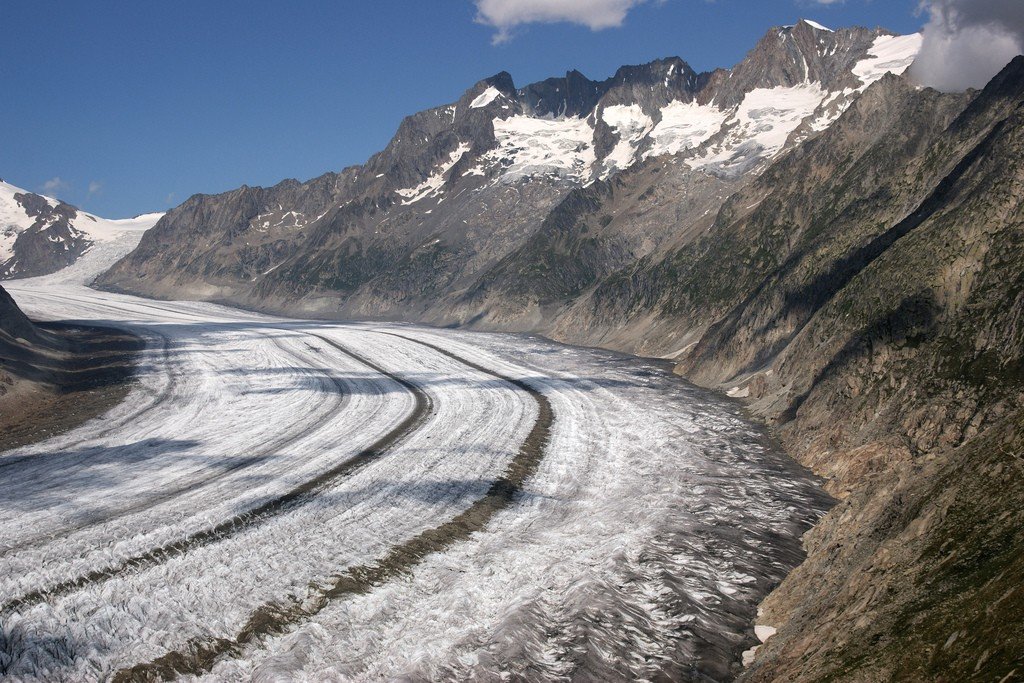
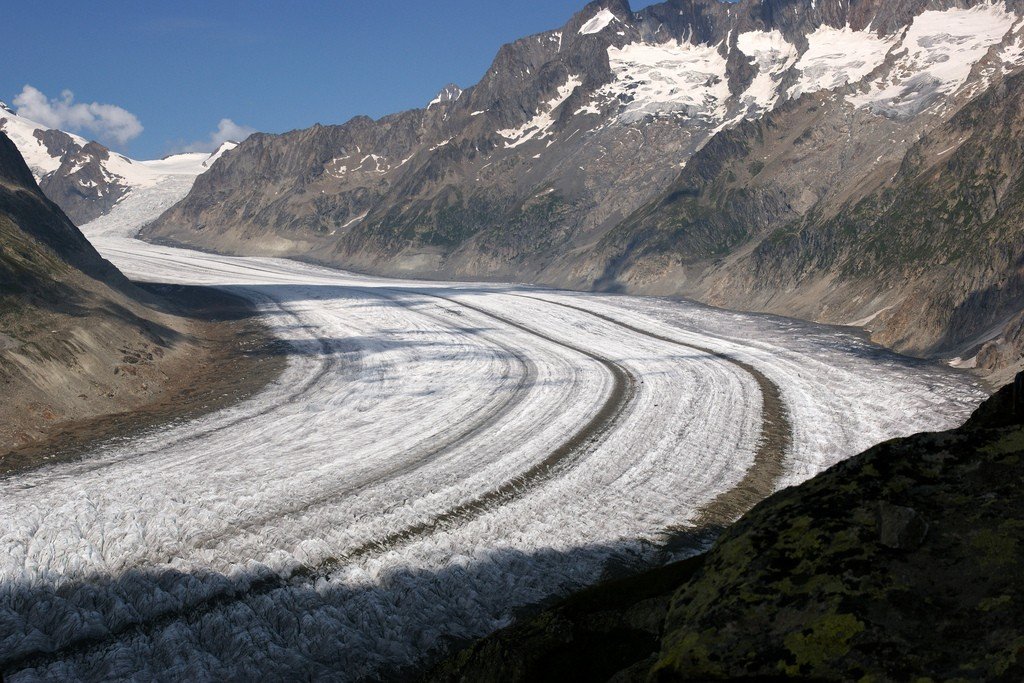
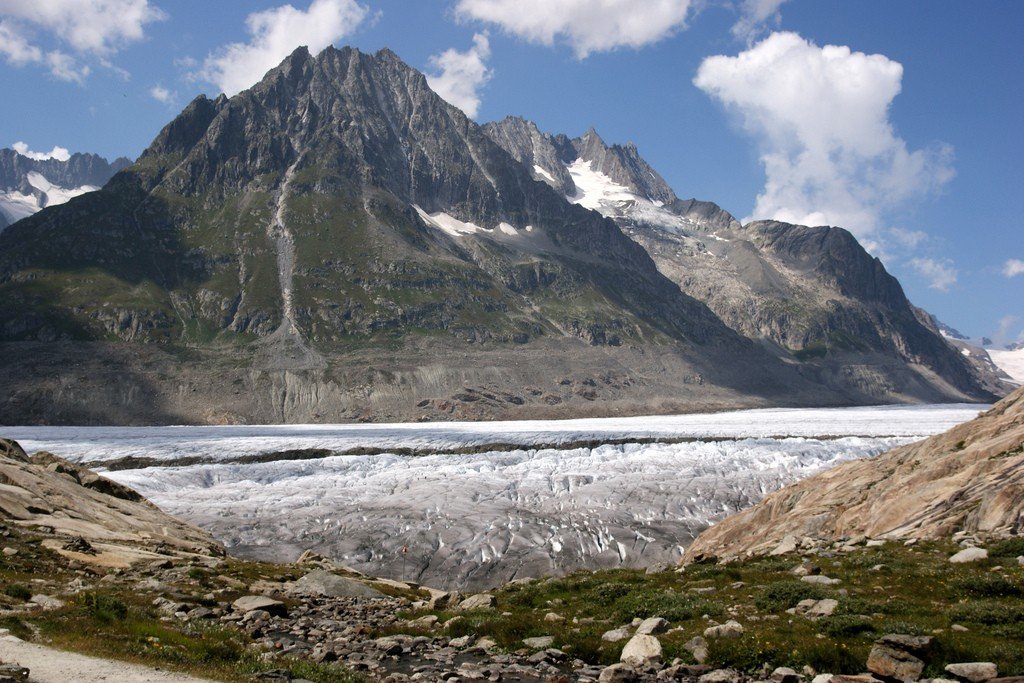

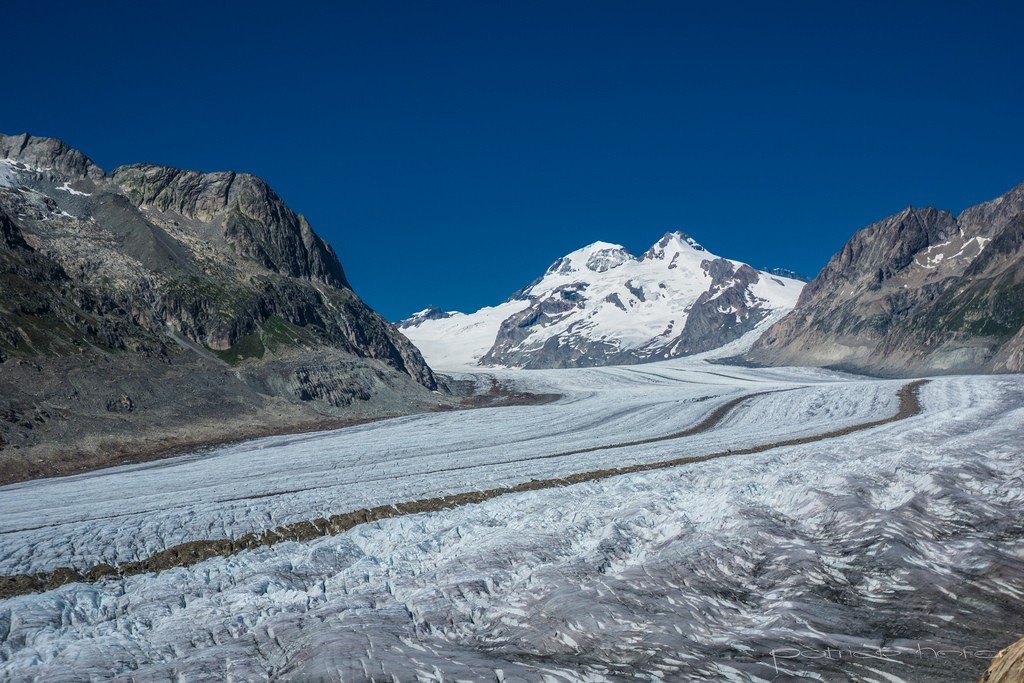
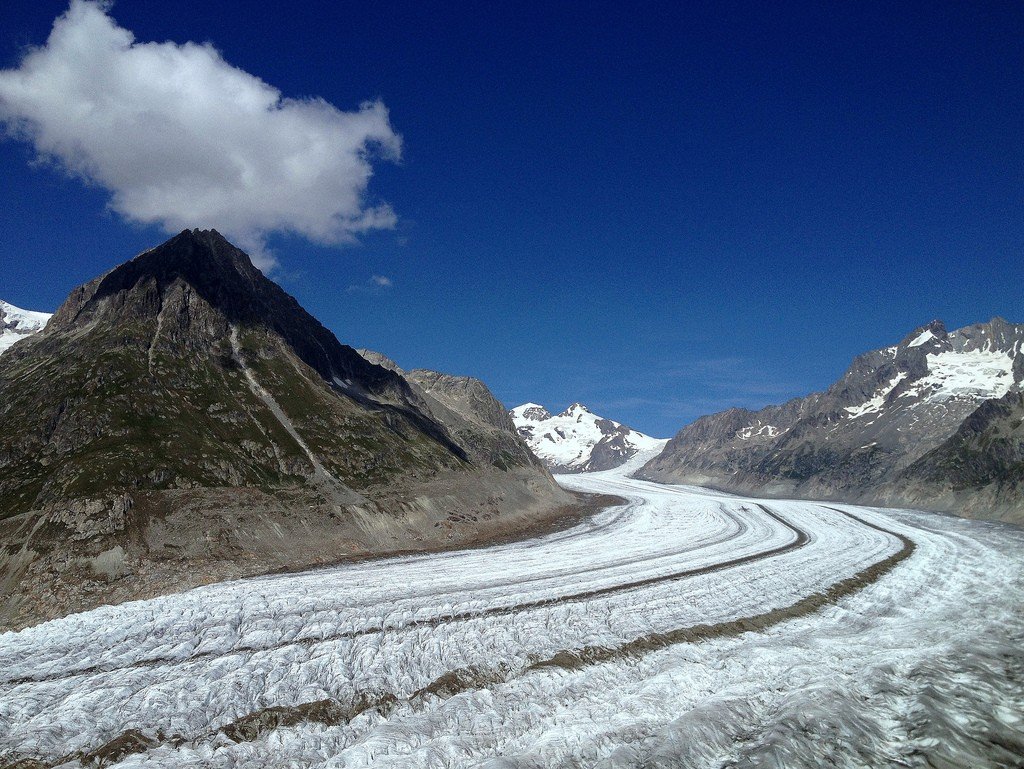
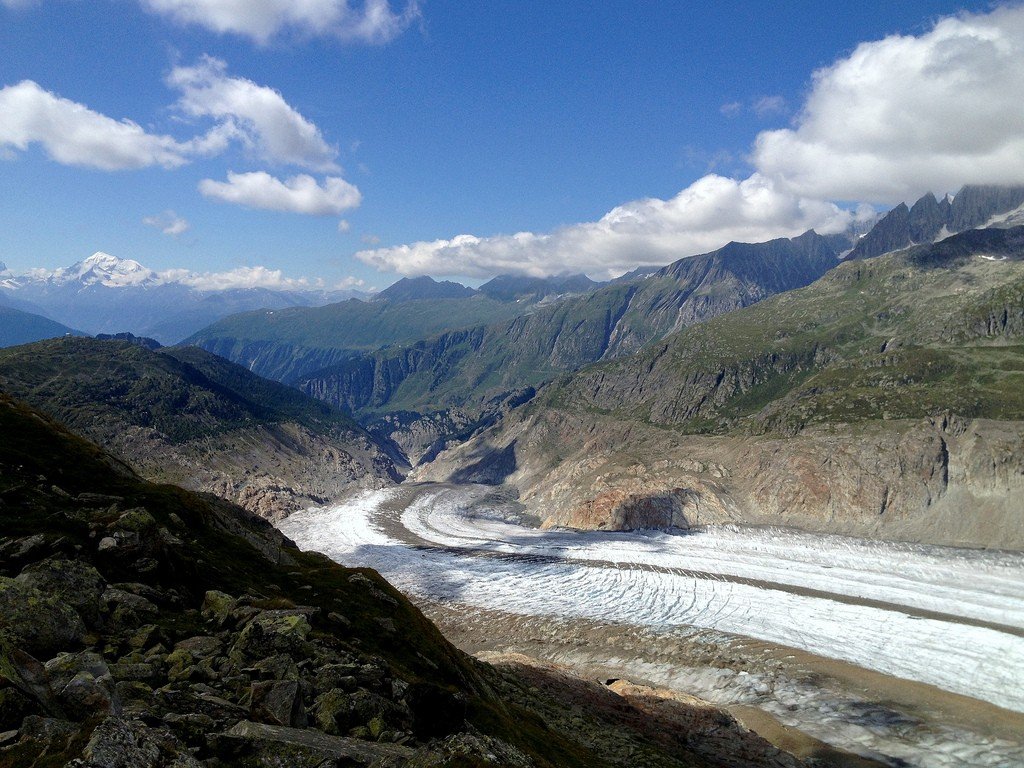
Video: Aletsch Glacier
Natural Wonder
People have lived near the Aletsch Glacier for more than a thousand years, but even those who dwell here today treat the neighborhood of this natural wonder as something unusual. If the glacier is mentioned in fairy tales, it is known as the “white giant”. The inexorable movement of this immense cold river creates fear and anxiety in the hearts of the people of Wallis, especially at night, when the creaking and rumbling of crumbling rocks can be heard in the silence of the mountains. No wonder there are so many tales of ghosts here: it is hard to believe that sounds so similar to the clang of swords and the groans of the wounded are made by inanimate masses of stone and ice, and not by people who once died. An old legend says that clairvoyants can see beneath the mass of ice the unfortunate souls of those who have perished from the cold. They will be released only after their sins are forgiven. For the inhabitants of Vallis themselves, these glittering slopes are more likely to be associated with the gates of the underworld.
>
Parts of the Glacier
The Aletsch Glacier feeds three extensive mobile ice fields – firn – that converge together at Concordiaplatz, covering an area of about 6 square kilometers. The Aletsch firn descends from the west, reaching the northern foothills of Aletsch and Drake peaks.
.
From the northwest descends the Jungfrau firn, the shortest of the three – only 7 km. From the north comes the 8-kilometer-long Evichschniefeld (“Region of eternal snow”), which starts at Mönch and descends in a wide arc to the Concordiaplatz.
.Below the Concordiaplatz, the Aletsch Glacier, the origin of three ice fields, turns into a 1.5 km wide ice river, making its way into the valley at a rate of 200 m per year, or 60 cm per day. The glacier slides southeastward into the Rhone Valley.
By the end of its journey, the ice is almost completely hidden by rock fragments and other debris picked up along the way, forming what are known as moraines. At 1,560 meters above sea level it turns into the Massa River, which flows into the Rhone just above the town of Bridge.
Two distinct dark stripes continue across the entire Aletsch Glacier from Concordiaplatz to Massa. These are protruding middle moraines, fragments from the Kranzberg and Trugberg cliffs, preserved by the division into distinct lines of the three glacial fields.
.
Generally, the glaciers of Switzerland are formed from compacted snow falling at altitudes above 4,000 meters. Countless layers of this snow turn into ice under its own weight, forming fields of firn sliding down the slopes. This whole process takes about ten years. In order for the ice to start creeping downhill, it must be subjected to tremendous pressure.
.
The surface of the glacier resembles a fantastic garden with fanciful streams, ditches and deep pools. The picture is completed by a thin brown layer of dust, formed from the crushed remains of stones ground up over years of hard work in the Rhone valley.
>
Melting Glacier
During the last ice age, the Aletsch was larger than it is today. 18,000 years ago, the entire lower part of the range between the glacier and the Riederalp was covered with ice. Then came the thawing period and the Aletsch resumed during the next ice age 11,000 years ago, reaching the Riederfurk and the Rhone valley, proof of which are the remains of moraines in the Aletsch forest. Since the last ice age, the glacier has retreated again, as it is affected by any, even subtle, climate change.
.
In 1860, the Aletsch ice was 200 meters thicker and 3,000 meters longer. Between 2005 and 2006, the glacier retreated 100 meters, although outwardly the glacier still looks huge, cold and impregnable. To raise public awareness of the critical issue of glacier shrinkage, photographer Spencer Tunick organized a photo shoot on the Aletsch Glacier in August 2007, where he shot naked people as models. The event was held in cooperation with the Greenpeace organization and involved 600 volunteers.
.
Tourists
The fact that Aletsch has climbed to the highest point in the Alps does not prevent it from being popular and visited by tourists on a daily basis: the Jungfraujoch railroad leads directly to the glacier, the terminus of which is the highest in Europe. Its last 10 kilometers pass through a tunnel, and emerging from it, the road is next to the glacier, among the dazzling snow.
.
Tourists will also be interested in visiting the glacier’s observation deck, which is reached by a high-speed elevator in just 25 seconds. There is also a weather station and the Sphinx Observatory, which is really remotely reminiscent of a futuristic silver sphinx among the mountains and snow. The platform is glazed, and it is possible to observe all the Alps, the Jungfrau – their highest point, the view all the way to France, lost in the fog, even in cold winters. In the Jungfraujoch, the Ice Museum with its elaborate ice figures is also worth a visit.
.